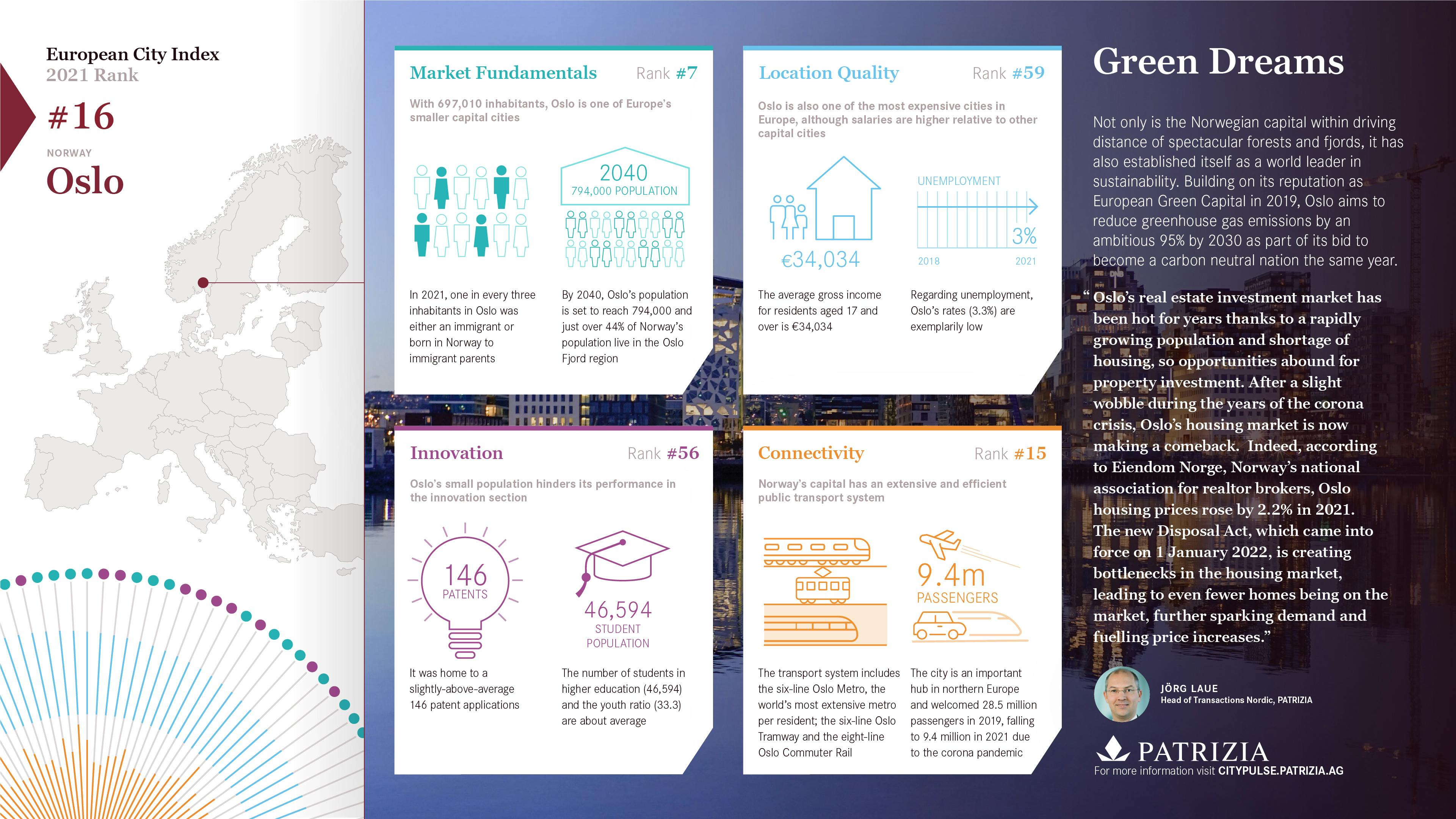Green Dreams
Not only is the Norwegian capital within driving distance of spectacular forests and fjords, it has also established itself as a world leader in sustainability. Building on its reputation as European Green Capital in 2019, Oslo aims to reduce greenhouse gas emissions by an ambitious 95% by 2030 as part of its bid to become a carbon neutral nation the same year.
The city is the first in the world to have its own climate budget, which shows municipal agencies where emissions must be cut and who is responsible for implementing appropriate measures.
Moreover, Oslo is leading the way in terms of electric vehicles (EV) adoption, with the most EVs per capita of any city globally. Over 82% of new passenger cars sold in Oslo are now fully electric, which is part of a broader national trend in Norway where the transition to electric vehicles has been remarkably successful. A significant portion of Oslo’s trams, buses and ferries run on hydroelectric power or biogas; by 2028, all public transport will be emissions-free.
At the centrepiece of Oslo’s bold green future is the city’s waterfront. Once home to trains, shipping containers and traffic-clogged streets, ‘Fjord City’ is now a magnet for pedestrians, cyclists and even swimmers. Impressive new apartments and a host of museums, cafes and restaurants have transformed it into the city’s hottest residential area and a centrepiece of Oslo’s urban development.
The city remains deeply committed to preserving its abundant natural spaces. Wherever they are, Oslo’s residents are never far from nature. More than two thirds of the municipality comprise protected forest, waterways and agricultural land, meaning 95% of residents have green space within 300 metres of their front door. And if that isn’t enough, the spectacular Oslofjord or huge Oslomarka forest are just a few kilometres away.
Oslo remains a prime destination for property investment, thanks to its robust population growth and limited housing supply. Following a slight dip during the pandemic, the housing market is making a strong comeback, with prices in Oslo projected to increase by 6% in 2024. The implementation of the new Disposal Act has further restricted supply, intensifying demand and driving up prices, making Oslo an attractive prospect for savvy property investors.
Jörg Laue, Head of Transactions Nordic, PATRIZIA
PATRIZIA City Snapshot


6
Oslo’s Market Fundamentals Ranking
With 697,010 inhabitants, Oslo is one of Europe’s smaller capital cities. That number is growing fast, though, as the city welcomes new labour immigrants. In 2021, one in every three inhabitants in Oslo was either an immigrant or born in Norway to immigrant parents. By 2040, Oslo’s population is set to reach 794,000. Just over 44% of Norway’s population live in the Oslo Fjord region (Oslo, Viken and Vestfold og Telemark).




